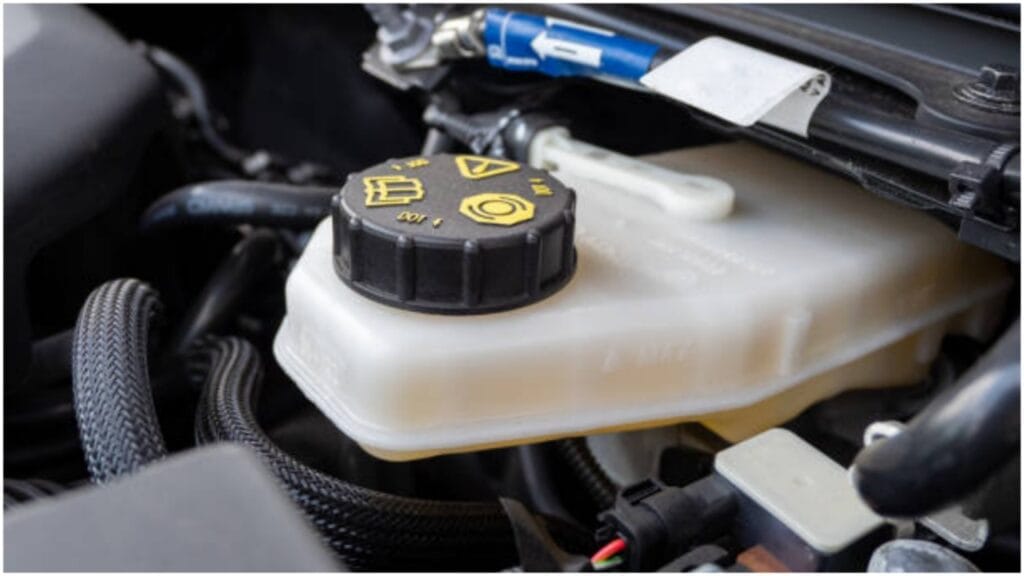Dealing with a coolant leak right after changing the water pump is just plain annoying. I’ve been there, and I know how it feels when you think you’ve fixed one problem only to end up with another.
So, if you’re seeing coolant dripping after replacing the water pump, it’s usually because the gasket didn’t seal right, the bolts aren’t tightened evenly, a hose got damaged, or there’s air trapped in the cooling system. Taking a close look at these things and making sure everything’s fitted properly should help you find and fix the problem.
Stick with me, and I’ll walk you through the common reasons for the leak, how to spot them, and what to do to get your car back to normal.
That gasket maker problem
If I’m not mistaken, using extra gasket maker can cause leaks instead of stopping them. It’s tempting to pile it on, thinking more is better, but that extra stuff can squish out and mess up the seal.
Sometimes, bits of it even break off and clog up the coolant passages, which just makes everything worse. The trick I’ve found is to use just a thin, even layer—enough to seal things up but not so much that it causes problems.
The Thermostat Trouble
I’ve had this problem before—replacing the water pump can mess with the thermostat sometimes. If the thermostat’s already a bit old or sticky, the new flow of coolant can make it act up.
When it gets stuck closed, it traps the coolant and builds up pressure, which can cause leaks around the pump or hoses. One way I’ve checked is by feeling the hoses when the engine’s warmed up—if one’s hot and the other’s cold, that’s a sign the thermostat’s stuck.
Corroded Connections
Over time, the spot where the water pump bolts onto the engine can get rusty or have bits of the old gasket stuck to it. Even a little bit of that stuff can mess up the seal and cause coolant to leak out.
When this happened to me, I grabbed some sandpaper and a wire brush and cleaned the surface until it was nice and smooth. It took a little time, but it made a big difference in getting a good seal. If you’re still seeing leaks, it might be worth checking if rust or leftover gasket is getting in the way.
Coolant Type Matters
The importance of using the right coolant is truly immense. Mixing different types, like green and orange, can cause a thick sludge that clogs the water pump, hoses, and radiator. I had to flush my whole system once because of this.
That sludge can also block passages and mess up seals, making it look like the water pump is leaking. Plus, some engines need specific coolant with additives to protect seals and bearings. Using the wrong one can speed up wear and cause leaks. So, always check your car’s manual and stick to the recommended type.
The Overflow Tank Illusion

I’ve been tricked by the overflow tank a few times, thinking there was something seriously wrong when it was just the system doing its job. When the engine heats up, the coolant expands and moves into the overflow tank, which is normal.
It might look full, but that doesn’t always mean there’s a problem. But, here’s the thing—if it’s constantly overflowing or staying full, that could be a sign that something’s off, like a clogged radiator or a coolant leak.
I once found that a bad radiator cap was making the coolant back up into the overflow tank, and I had no idea until I looked closer. So, if your tank looks full, wait until the engine cools down and check the coolant level in the radiator.
Cold Leaks Versus Hot Leaks
When the engine’s cold, everything is under low pressure, so small leaks can be tricky to spot. I’ve had moments where I thought everything was fine, only to find out later that a tiny crack in a hose or gasket was leaking once the engine heated up.
That’s because, when the engine gets hot, the pressure builds, and the coolant has nowhere to go but out. If you notice coolant leaking after the engine’s warmed up, it’s a bigger deal. Hot leaks are usually more serious since the system is under higher pressure.
I’ve learned to check around the water pump, hoses, and gaskets when this happens. It’s definitely worth looking into right away, because a hot leak usually means there’s something wrong that needs fixing.
Keep the Radiator Clean
Keeping your radiator clean is extremely important. Dirt, insects, and even leaves can build up there and block airflow. I remember when my engine started running hotter than usual, and I couldn’t figure out why.
Turns out, my radiator was clogged with all sorts of stuff! Now, what I do is check it often and give it a quick clean. A simple rinse with water or a blast of compressed air works wonders.
If there’s stubborn dirt, I’ll use a soft brush to get it out without damaging the fins. It doesn’t take long, but keeping the radiator clean helps keep the engine cool and running right. So, don’t forget to clean your radiator occasionally.
Common signs of water pump failure

The first thing I noticed was the engine overheating. If the water pump isn’t doing its job, the coolant isn’t flowing properly and the engine gets very hot. I also started to see coolant leaking around the water pump, which was a big problem for me.
Then, I noticed strange noises. When the water pump goes bad, it can make a whining or grinding sound. This is a sure sign that the bearings inside could be failing.
And, of course, I’ve also had times when the car didn’t have much power or the heater wasn’t working properly. If you notice any of these signs, don’t wait too long. It’s best to replace the water pump without delay to avoid bigger problems in the future.
FAQ’s
Why is my coolant still leaking after replacing the water pump?
Most of the time, it’s not the new pump itself but something else in the cooling system causing trouble. One of the biggest reasons I’ve run into is the gasket not sealing right. If it’s even a little off, coolant can sneak through.
I’ve also made the mistake of not tightening the bolts evenly, which can leave tiny gaps for leaks. So, it’s always a good idea to double-check if everything’s snug and sealed properly. Another thing, Old, cracked, or loose hoses can leak coolant even if the pump is brand new.
I’ve overlooked a tiny crack in a hose before, thinking the pump was bad, but it was just that sneaky little crack. And, don’t forget the radiator cap. If it’s not sealing right, it can mess up the pressure and make coolant spill out. So, if you’re still seeing leaks, it’s worth taking a slow and careful look at all the connections, hoses, and seals around the pump.
Why is my coolant leaking too much coolant?
When you notice a lot of coolant leaking from your car, it’s a real concern. If it’s leaking, there’s usually something wrong. The first thing I find is that there may be a large crack or hole in the radiator or hose. It may not seem like much at first, but when coolant starts leaking out, you realize it’s serious.
I’ve also had problems with the radiator cap. If the thing isn’t sealed properly, it can mess with the system pressure and cause coolant to leak everywhere. This is something I’ve missed before, and it really made a mess. Another thing to keep an eye on is the water pump. If the seal is bad or not installed properly, coolant can leak out a lot faster than you think.
And, don’t forget about the thermostat. If it’s clogged, it can’t allow coolant to flow properly, which builds pressure and causes it to spill out. If you see a large amount of coolant leaking, take a good look at the hoses, water pump, and radiator to figure out what’s wrong.
What happens if coolant reservoir is overfilled?
I’ve also had some worrying moments with an overfilled coolant reservoir and let me tell you, it’s not something to ignore. When it’s overfilled, coolant comes out, especially when the engine heats up and the coolant expands. I remember seeing coolant all over the engine bay, and it was a problem I didn’t want to deal with.
What I’ve learned is that overfilling can also disrupt the pressure in the entire cooling system. The excess coolant puts too much pressure on everything and can result in damaged hoses or seals. I’ve also had leaks due to overpressure. This is something to be careful of.
Another thing I’ve realized is that the overflow tank has a limit. If you overfill it, there’s nowhere for the excess coolant to go and that’s when you start to see problems. If you notice that your coolant is too high, drain it out a small amount of water to bring it back down to the proper level.
Conclusion
Having experienced this whole coolant leak thing myself, I can tell you that it’s not always as bad as it seems. Yes, it can be annoying when things don’t go according to plan, but most of the time, it’s just a small thing that needs fixing.
Whether it’s a gasket that’s not sealing properly, a small leak, or maybe some old coolant messing things up, taking a little time to check and fix it usually does the trick. I’ve had many moments where I thought I had a problem, but the key is to stay calm and keep looking.
So, if you notice a leak after replacing your water pump, don’t panic. With a little patience and a good look around, you can usually figure out what’s going on.

